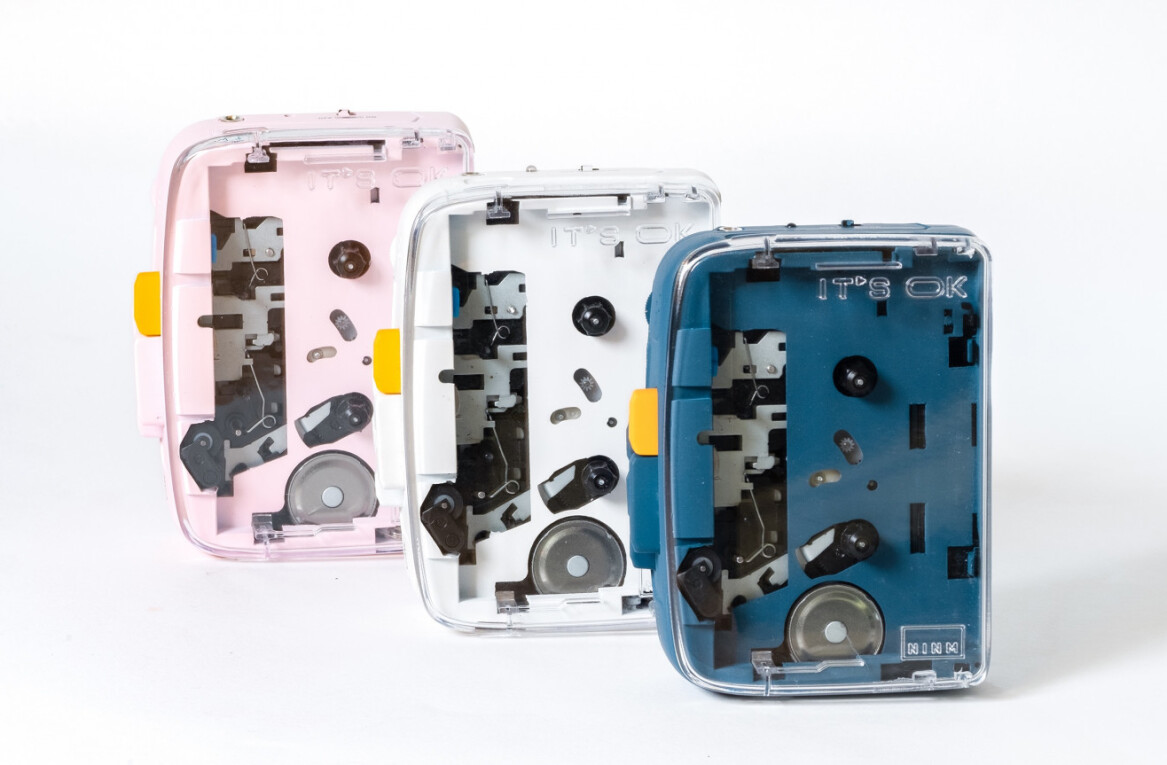
Pixate is trying to make native mobile development easier. The company’s Kickstarter campaign to fund initial development recently passed its funding goal of $25,000. But some of those backers have never seen the original campaign, which was cancelled before it reached its goal of $200,000, nor did they realize that the project was given a massive leg up by a single corporate sponsor with ties to the organizers.
The company recently graduated from Y Combinator’s accelerator program, and is working on a product that allows less experienced developers to customize native mobile UIs with CSS. It’s a noble goal, and a difficult problem. Other precursors, like Titanium and Phonegap, are notorious for poor performance and difficult-to-diagnose bugs.
And in a strange twist, the company did something that struck some people as odd: it ran a paid sponsorship for the as-yet-unfunded Kickstarter campaign.
Pixate’s origins: Aptana and Titanium
Pixate announced their product in early August with a $200,000 Kickstarter project. The company is run by two people: Paul Colton and Kevin Lindsey, both are formerly of Aptana, which was sold to Appcelerator in January 2011. Aptana made Aptana Studio, an integrated development environment (IDE) for web app developers. Their tool was especially popular when used with Appcelerator’s Titanium, which allowed web developers to package HTML5 apps for distribution as mobile apps. Aptana’s product now serves as the basis for Appcelerator’s Titanium Studio, which Lindsey played a key role in developing.
Titanium has a reputation for being an excellent tool for quick prototyping and a horrible tool for shipping production-quality apps. While the familiarity of developing in HTML5 eases the learning curve, the framework has a history of serious memory leaks which will cause any app built with it to eventually crash if run for long enough. Hopefully Lindsey has learned enough working on Titanium Studio to ensure the same thing doesn’t happen with this product.
In an email Colton declined to comment on performance, and would not state whether the company had performed any benchmark testing to determine performance relative to the same apps made using only native code.
I could give plenty of technical reasons why frameworks like Titanium, Pixate, or Adobe Phonegap are a bad choice for developers, but that could easily fill a separate post. Suffice it to say that designing and developing cross-platform and web-based mobile frameworks is a game of arbitrage, and app developers will end up trading performance in exchange for a facile toolchain. [Update: Colton pointed out that Pixate is not a “cross-platform” framework, but rather a tool for styling native controls with CSS. Still, the frameworks mentioned all share the goal of making app development easier for those with web experience.] Five years later, the only foolproof way to make a high-quality iOS app is still by doing it the same way Apple does: by writing native code.
A paid sponsorship for a Kickstarter campaign?

Last week, Pixate ran a Daring Fireball sponsorship. Here’s the sponsorship post from the site’s RSS feed:
Pixate aims to bring beautiful native mobile apps within reach of all developers and designers. Through a rendering engine focused on peak, native performance, you can style entire native mobile apps using just CSS and resolution-independent vector graphics. This removes all the friction involved in realizing custom interfaces, and enables entirely new possibilities like modifying UIs dynamically—in real-time. Pixate is all of this and more, and you can play a role in bringing this product to market… Kickstart Pixate today.
While the text of the feed sponsorship itself is a little misleading — the use of the present tense makes it seem like the product is already available before the reveal at the end — the real problem with it, at least according to the few comments on Twitter, is that it’s damn expensive. Daring Fireball is waterfront property in the blogosphere, and John Gruber charges $7,500 for a one-week sponsorship (Colton explained that the sponsorship was purchased with personal funds, not with seed money).
That’s about as much as the average successful Kickstarter project raises.
Let me clarify up front: I take no issue with Gruber running a sponsorship from Pixate. Gruber confirmed in an email that the only details Pixate offered to him were that the company was a “barely funded startup”, that it had gone through Y Combinator, and a brief description of the project. The man lives off his writing, and he has rent, a family, and a cable bill. As long as he’s not pitching products that cause cancer or otherwise contribute to the downfall of society, I could care less how he pays for them. And while his blog gets as many as four million hits a month, he still has a sponsorship slot open for August at the time of writing.
I am concerned, however, that the Kickstarter is now being used to raise funds for a company the founder of which is a serial entrepreneur with five companies behind him, and which graduated from Y Combinator, arguably the most prestigious seed accelerator in tech at the moment with over one application per minute as of late last year.
Kickstarter is inspiring in part because it allows its users to circumvent the Gatekeeper-Model of Innovation. The reason so many projects can only happen through Kickstarter is that raising money for them through traditional funding channels is impossible (try getting anyone other than Tony Hawk to fund a skate park). Yes, raising angel funds from friends and family has always been an alternative, but isn’t Kickstarter just a way to amplify that same process?
Colton has a history of successful exits, with previous companies sold to Adobe, Appcelerator, and HootSuite. Pixate already went through one of the most prestigious accelerators in the Silicon Valley. And the project’s only corporate sponsor acquired one of Colton’s previous ventures, and will benefit directly as an “integration partner” with Pixate. All these facts, taken together, make it hard to view Pixate as a “barely-funded startup”, or one which needs Kickstarter for anything other than generating word of mouth.
Moving the goalposts
What concerns me more than question of the sponsorship, or even whether or not this Kickstarter project is a good idea, is the lack of transparency in the way it’s been managed. [Update: Colton maintains that the project has been fully transparent, citing backer-only updates about the goal change, though it is still unclear how potential backers of the new project were informed of the goal change.] When Pixate saw that they were still barely over 10% funded, even after the sponsorship, they issued a course correction.
The company set up a second Kickstarter page, redirecting users to it from the original page while it was still active. They also changed their homepage to redirect directly to the new project. The funding goal was reduced to $25,000: a little more than $3,000 over their funding level before the original project was cancelled.
The company removed all the text from the first project’s page, including the FAQ, and moved it to the new page. Kickstarter doesn’t let project organizers change rewards after a project goes live. They can, however, add additional rewards and edit the project’s description. The second page’s FAQ, however, was missing multiple items from the first version, including the description of what the money would be used for (paying three developers and one designer). Potential backers can see the company’s previously cancelled project in the new project page’s footer, but the link is not prominent, and the cancelled project does little to inform without the original text.
Colton explained the change in his email to The Next Web:
When we originally set the goal, it was to cover several engineers and a designer for about a year or so to get the product to completion and beyond. What we heard loud and clear from most people was they didn’t want to ‘buy’ into that risk – they’d rather see a much lower goal to just get to the first minimally viable product, in our case, just the Pixate Engine 1.0 for iOS. Everything else (i.e. Android) could come on the success of that. There’s also a psychology involved, the further you are from the half-way point of fundraising, the fewer people pledge. It’s counter-intuitive, but it’s how [it] tends to play out.
As it turns out, of the $22,000 pledged to the first project, they were immediately able to recoup almost half of the money in the new project: their first corporate sponsor, Appcelerator, is presumably the same backer at the $10,000 reward tier on the new project (both the old and new have only one backer at that tier). It’s likely that Appcelerator’s sponsorship helped push the project past the halfway mark soon after the new campaign was launched.
In addition, the company has not differentiated the project in any way that justifies the drastic reduction in the goal. The new project’s description reads almost exactly like the old one’s, and the goal is 12.5% of the original value. Colton declined to comment on exactly how they planned on executing the project’s vision now with only $25,000, stating only that they planned on deferring support for additional non-iOS platforms until after the first version.
Either Pixate seriously overshot the initial costs (unlikely; it usually goes the other way, and mobile developers cost considerably more than $50k/year even with a generous options package), or the project will be 12.5% as developed as their original vision. Cutting Android from the 1.0 doesn’t cut 87.5% of the work.
Kickstarter’s evolution
As Kickstarter grows in popularity, it’s unavoidable that some projects will go wrong. Usually, outright scams are identified and called out quickly by the community, like this project which used plagiarized art. But even well-intentioned organizers can make mistakes. Sometimes, as with the “i+case” metal iPhone case, the organizers just aren’t clear enough with the messaging.
I honestly don’t think that the Pixate guys have anything other than the best of intentions, and I believe they feel strongly that their product could improve iOS development for a lot of people. Perhaps it will, someday. But the fact remains that they moved the goalposts, and used a company with close ties to the founders to quickly push the new campaign way past a critical tipping point soon after launch. And while Colton did respond to my request for comment on the goal change, Pixate was less than transparent with the new backers after cancelling the old project.
I’m also concerned that many Kickstarter organizers are setting their sights too high. Many of these massively ambitious 6-figure campaigns have upped the ante on production, spawning a cottage industry of Kickstarter advisors and video producers that specialize in crafting the perfect pitch. The intense competition has even reached the level of self-parody, courtesy of xkcd.
Still, who am I to limit the amibitions of others? After all, Kickstarter is still growing like crazy. By the company’s own study, massive Kickstarter projects bring in more repeat backers to the site, increasing the pool of capital and improving the entire ecosystem. And let’s not forget that while those of us who regularly follow tech blogs see many Kickstarter campaigns launched per month, America is just waking up to the magic of crowdfunding.
Having thought about this a lot over the last few days I researched this story, I’ve decided that for now, at least, any project that’s run honestly and transparently — no matter how lofty the goal — is good for everyone involved.
Image Credit: carnero
Get the TNW newsletter
Get the most important tech news in your inbox each week.






